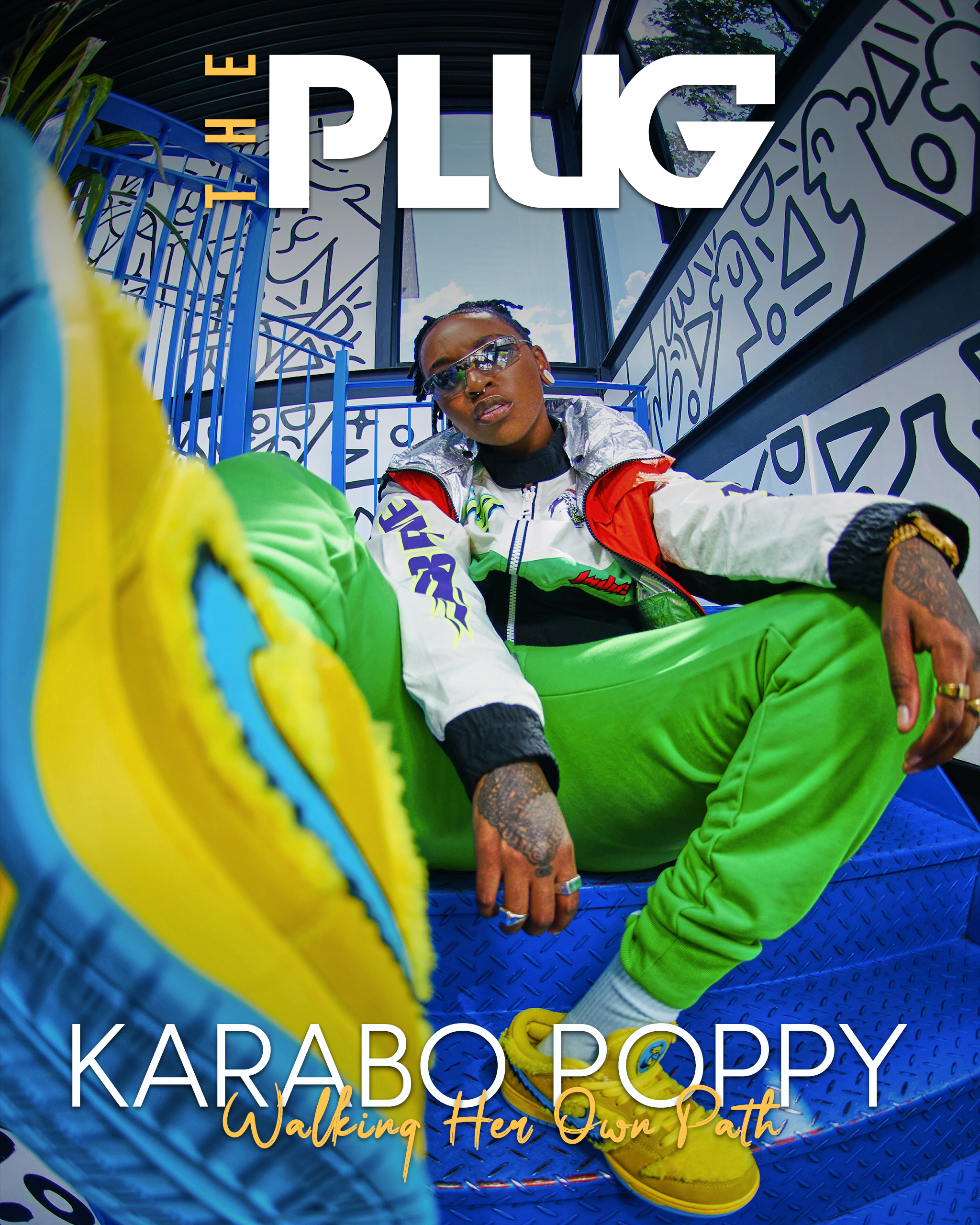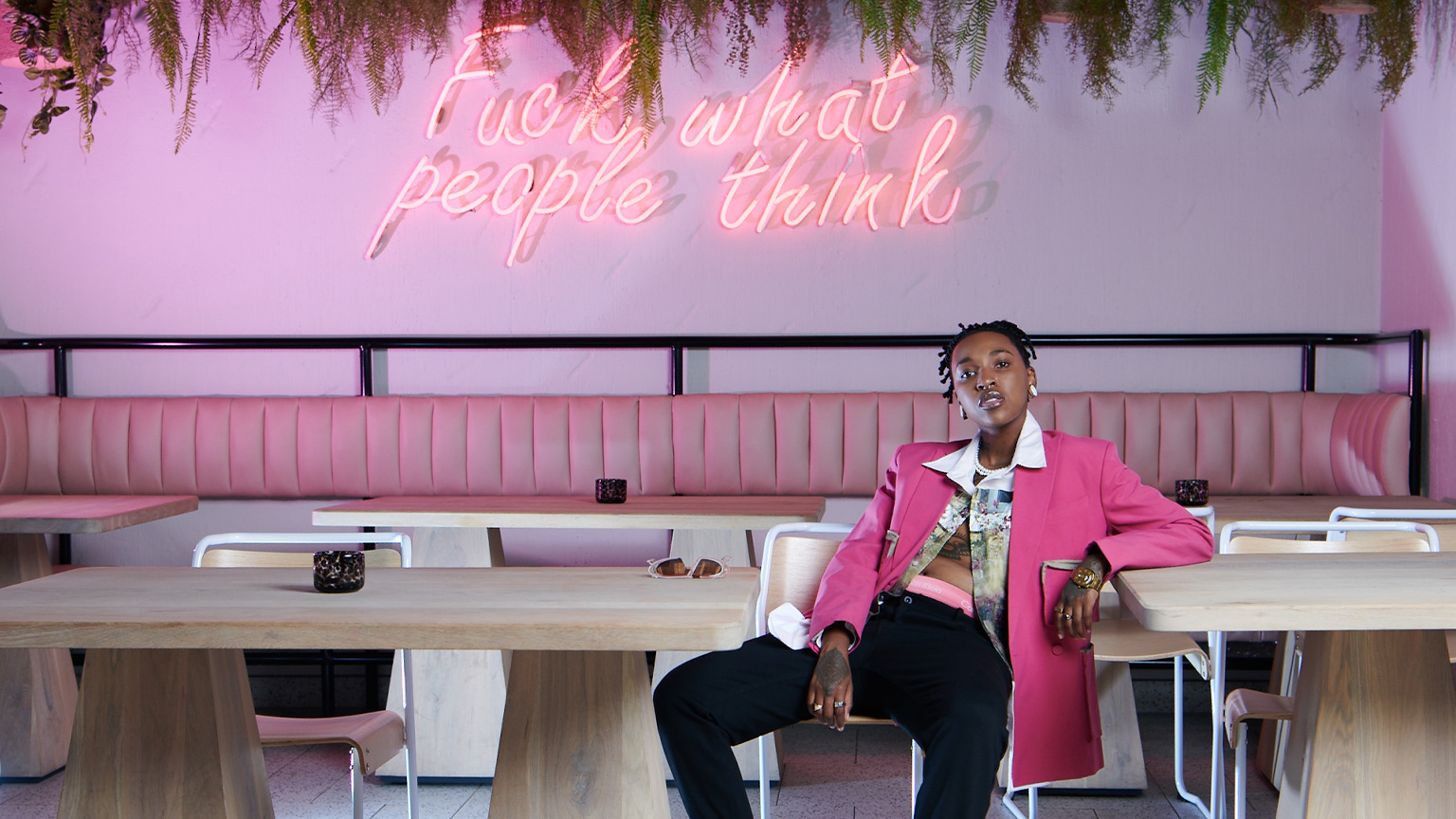

They say an artist’s greatest inspirations are found in their surroundings. Salvadore Dali needed the landscape, light, and ‘geological peacefulness’ of Port Lligat, his home, to create his finest works. Rich Mnisi credits the women in his family as his inspiration. Speaking of his great-grandmother, he said, “the stories about her and my understanding of who she was, can be found in my clothing.”
If you’re a kid in the 90s and your name is Karabo Poppy Moletsane, you’re awestruck by the characters in video games. So much so that the seeds of design and portraiture are planted in your mind’s eye by the simple after-school activity of watching TV.
“I grew up [in the] nineties, watching TV, playing Sega, Disney cartoons, everything around that was what I spent most of my time doing. I did go outside also, I was very sporty kid too, but that was something that visually excited me. I’d always been looking at how different cartoons have like a different style.”
Whether it was The Simpsons, Disney, Futurama, or even clay animation, the difference in portraiture was something she was fascinated with from an early age. “I’d always wanted to have my own style of drawing people. And being exposed to that media, I was always like, ‘this is so fascinating and so beautiful and it literally captures my attention for hours, but I don’t see everyday people that I encounter.’”
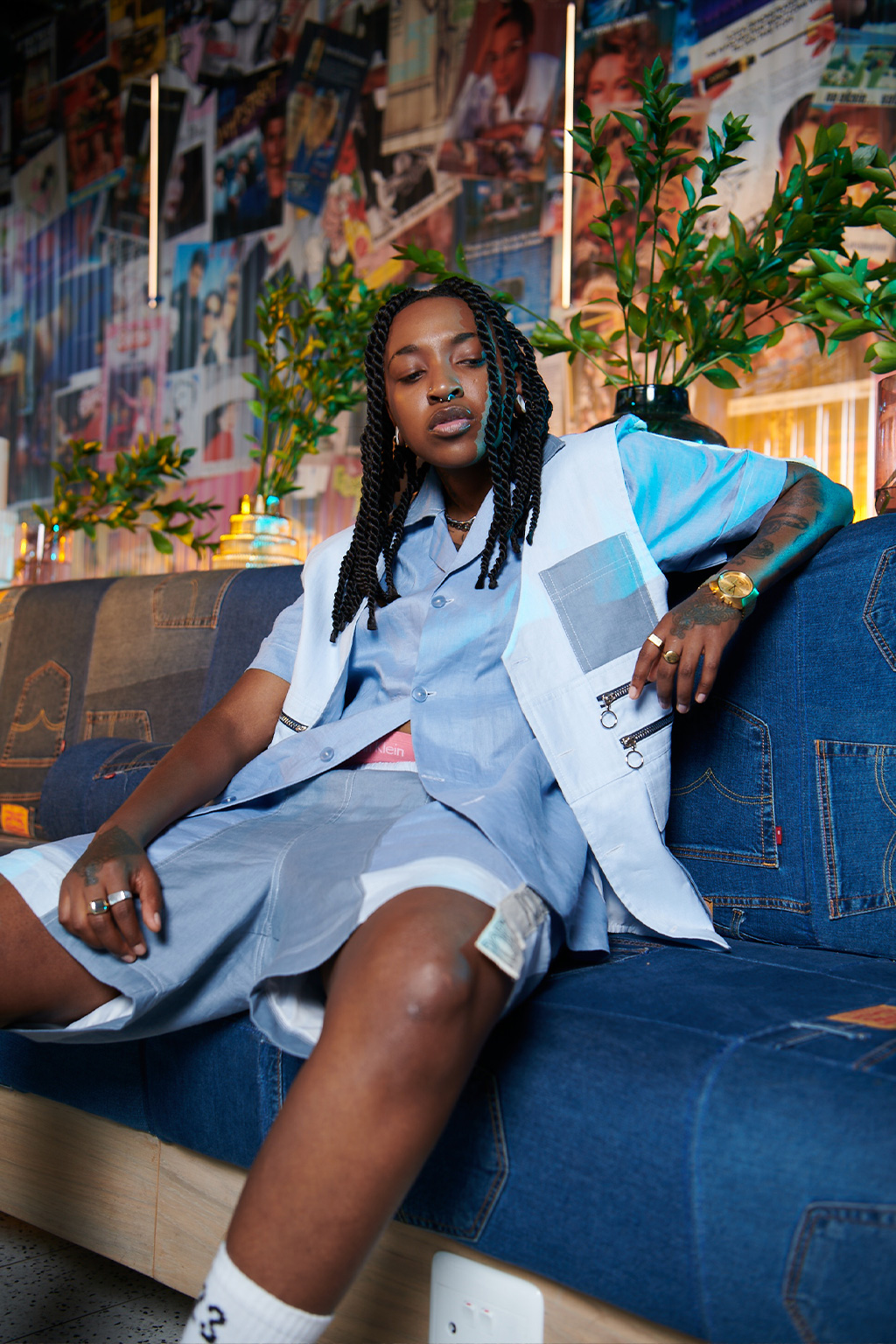
I ask her how much of her portraiture is based on what she sees in the people around her, versus what she would like to see in the people around her. She says, “I’ve always wanted to see, not just my family, but just normal people that I grew up with in my neighbourhood, being portrayed in this media. I want to see, like, the guy that does my hair be a main character in like a Claymation animation.”
“I always used to base my portraiture on taking pictures of live people, and then from there, illustrating them. So it’s a little bit of having their features, their style – and through having conversations with them – their story. But then I want to portray it in a new kind of voice. So it’s that kind of collaboration of the two coming together. My work’s always been based on people that I’ve encountered, people that I’ve seen through the years, but it’s always had a part of how I see them too. So how someone else with a camera would take a photo and then interpret that person’s story and style is going to be completely different to how I would do it. And I always wanted to portray that in a way that that person or anyone else has never seen before.”
“That’s why I started drawing my figures with halos behind them, to show that I think it’s the everyday South African that actually carries this beautiful aesthetic that we have. And because I see that in the everyday. The everyday is not often celebrated and I wanted to use my work to celebrate that every day because I think that’s where our aesthetic and our culture is. That’s the longevity, that’s where we’re going to see it being carried on, over and over. And I just wanted to show that in a celebratory kind of way using my style to do it.”
In her varsity years she would walk around the Pretoria CBD and take pictures to use as a visual library because she felt it was a great example of our creative aesthetic as South Africans look like in the every day. When people approached her, asking to have their picture taken by her, it dawned on her that “this desire to see the everyday life being portrayed on media isn’t just a desire that I had, but I saw my community and my immediate community of everyday people actually also wanted to see that. So then that gave me more confidence within it because I knew that it wasn’t just something that I believed in but I think the greater South Africa believed in. And if that’s the case just for South Africa, I think it’s something that’s spilled over into the African continent and in other countries. As I’ve gotten the opportunity to travel, I’ve always seen this golden thread of everyday people also wanting to see that kind of representation. I use my work to carry on doing that.”
Karabo’s recently signed on with Johnnie Walker as a brand ambassador in South Africa. Having worked with brands before, I asked why this was such a special collaboration for her. “I’ve worked with Johnnie Walker before in the past and something that I can really admire about the brand is their consistency. So I find a lot of the things that I believe in shown through the years when it comes to the brand. From when I started working with them, until now, I’ve always seen a focus in trying to build the creative industry and giving different people in different styles a chance to have their work showcased with the brand.”
“The brand has a long, long history, and it’s everyone from young generations to older generations know of the brand. And in recent years we’ve seen the branding being known for celebrating and supporting creatives, and that’s something that I’ve always been a firm believer in. But it wasn’t that I saw it one year, maybe two years. I’ve been seeing it year after year and seeing the consistency in that, and then actually investing in even more creators as the years are going.”
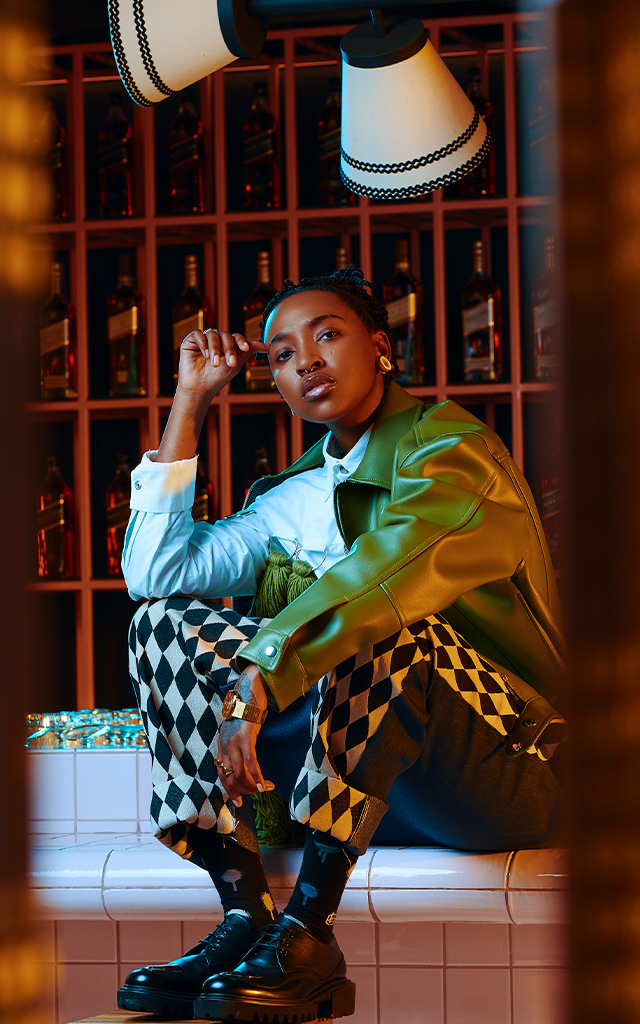
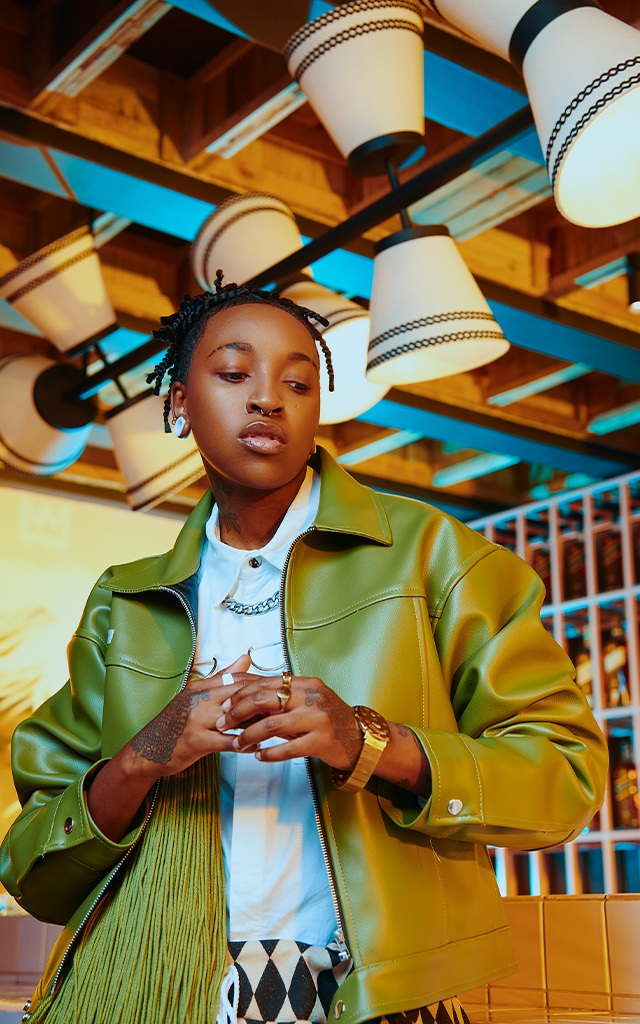
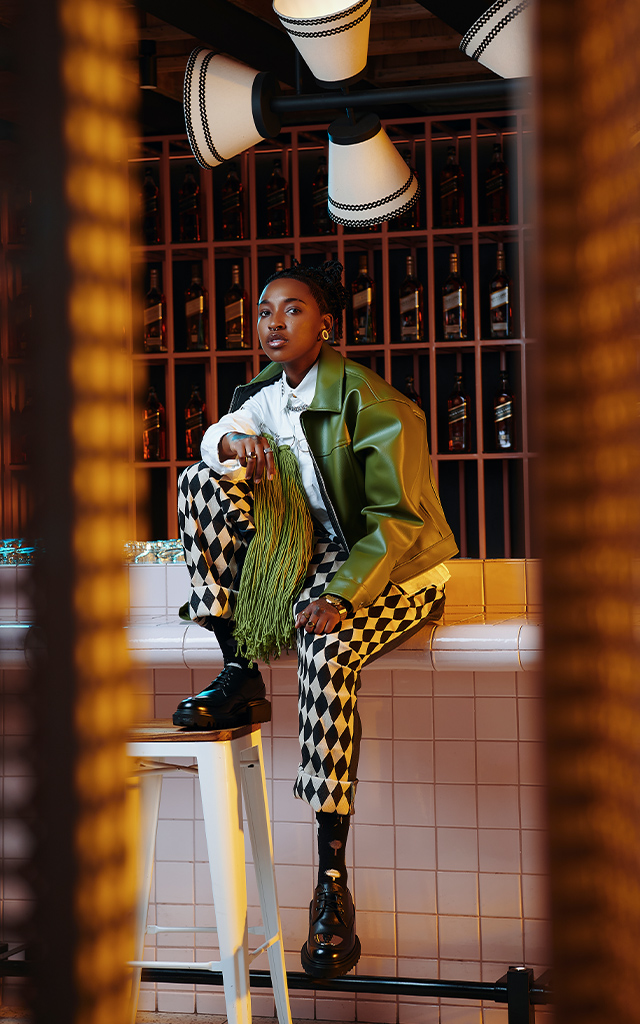
“So that was a very big draw card for me joining the brand because I get to join what I believe with what they believe and together I think we’ll be able to like create change around that. I really liked the idea of ‘Keep Walking’ because it’s showing fluidity, it’s almost inviting change to come. So, like, we’ve done things a certain way, but it’s encouraging innovation upon innovation. So if that’s something that they built the brand on already, when they started, I think it puts me in a good position with them because that’s always something that I’ve wanted to do.”
“And if they’re doing that within the creatives sphere, it was often a neglected part of life, but now they’ve put the focus back on. And being able to aid in that was just doing all the things that I’ve already wanted to do.”
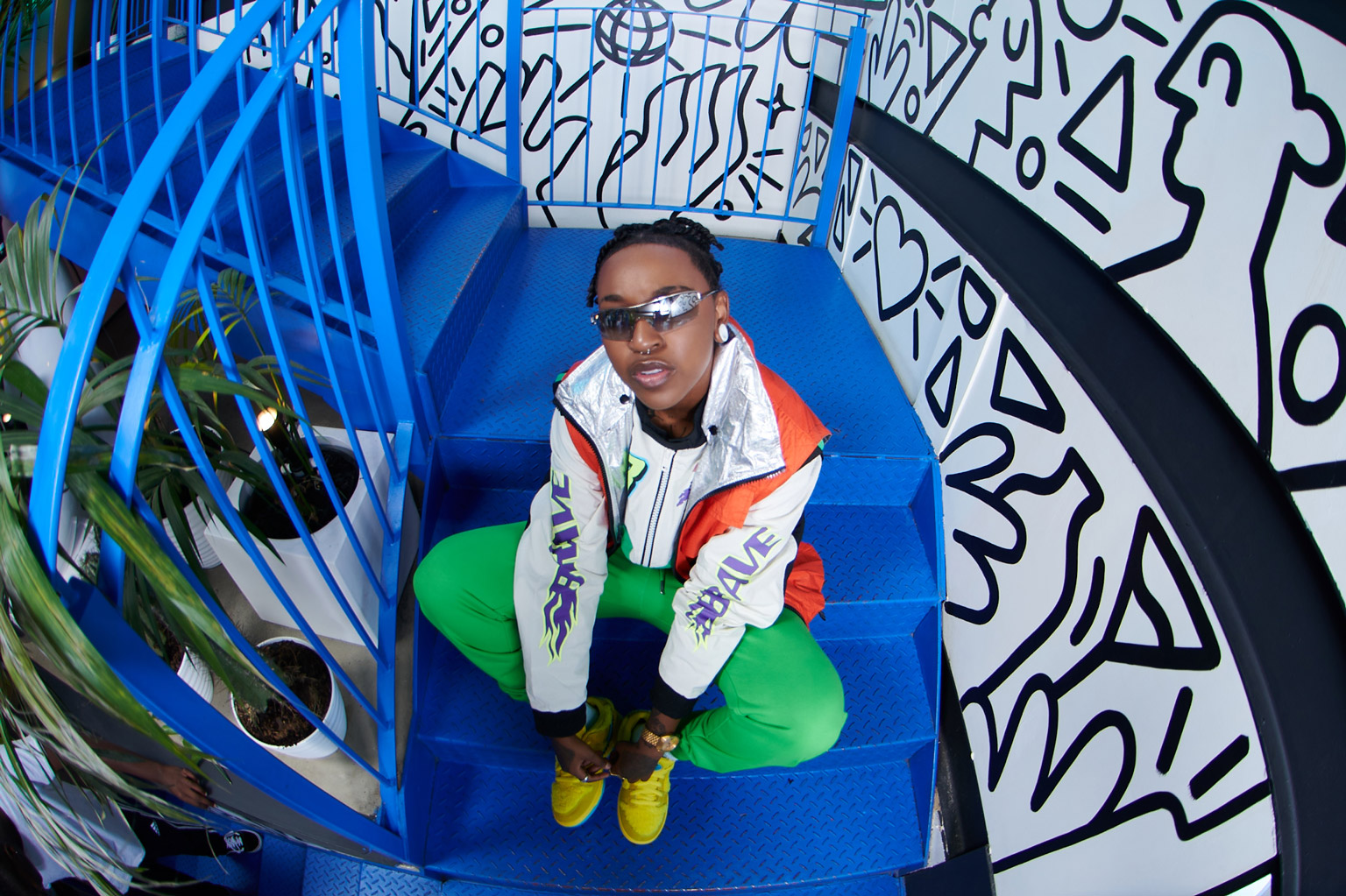
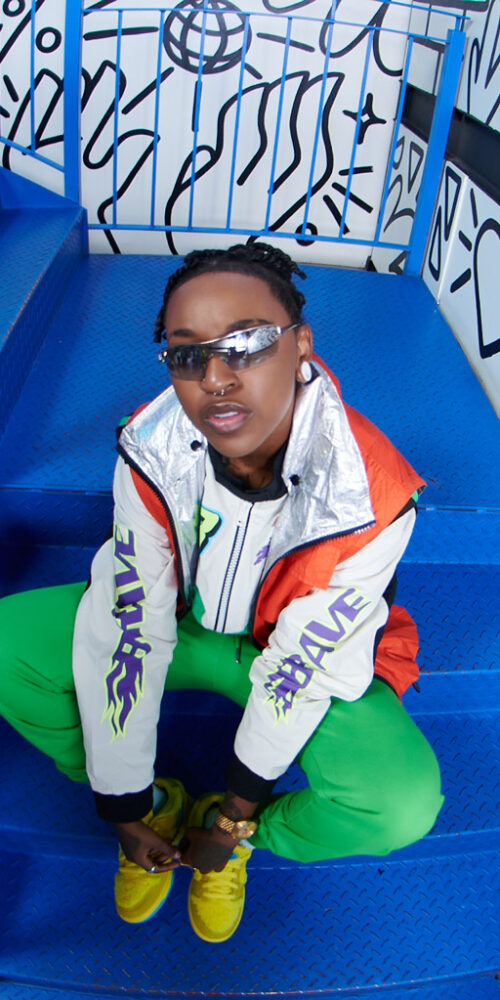
Fairly certain of her calling now, the journey to her chosen career wasn’t as simple. Growing up in Vereeniging, she didn’t think artistry was something that she could make money from. Her parents also urged her to pursue a career with more stability to them. “My parents are in their seventies now. So their knowledge of what’s possible has been based from a very different place than my knowledge of what’s possible.”
“I also come from a town where there’s not much street art, there isn’t a gallery, art wasn’t something that was easily accessible or shown. So that’s why a lot of my inspiration came from the things that I watched. Cause that’s where I saw this expression of art up until I started getting my hair done in the salons and I saw traditional barbershop painted signage. And then that’s where I saw that this is art that feels like home. But it was never a career choice though. So I spent all my life being told, ‘okay, being a doctor might be a great option.’ I actually also wanted that for myself.”
“In school, I took math, I took science. I was building everything towards becoming a reconstructive surgeon, but I always had this creative side and this love of portraiture and a very keen eye for it as well. And I was even a realistic oil painter when I was in high school. And then I thought to bring in both like my analytical and creative side I could look into reconstructive surgery because I’ve got such a keen understanding.”
A substitute teacher in Matric told her she’s making a big mistake by not pursuing a career in the arts, but asked her to at least collect a few brochures from The Open Window on her way to the open day at The University of Pretoria and see how she feels about it. She never made it to UP.
“In me researching for other people that wanted to go into art, I then fell in love with digital art.
So I was looking at everything that they were doing and I remembered that these were all the things that excited me growing up, but I didn’t think it was possible. And that was the first time I realized that all the things that fascinated me, I could be doing that. The access seems so much closer and more tangible.” She told her parents she’d be pursuing her art career and will keep medicine as a backup. Her dad’s response? “I think you’re the first person in history that said medicine is a backup.”
“As I got to learn more and more, I just fell in love with it even more. I saw the potential for it growing. I saw the potential to actually bring about actual change within how people view South African aesthetics and the African aesthetic when it comes to the kind of representation within this industry. There was so many open spaces that needed to be filled. And I felt a responsibility to be some of the starters to actually encourage people to be doing this. So then my drive just carried on more and more. I said, there’s always going to be black doctors. There’s always been black doctors. We’re going to keep seeing black reconstructive surgeons. And we’re going to see that grow. But I think true growth is if we grow in every kind of industry, and I’m not seeing many here.”
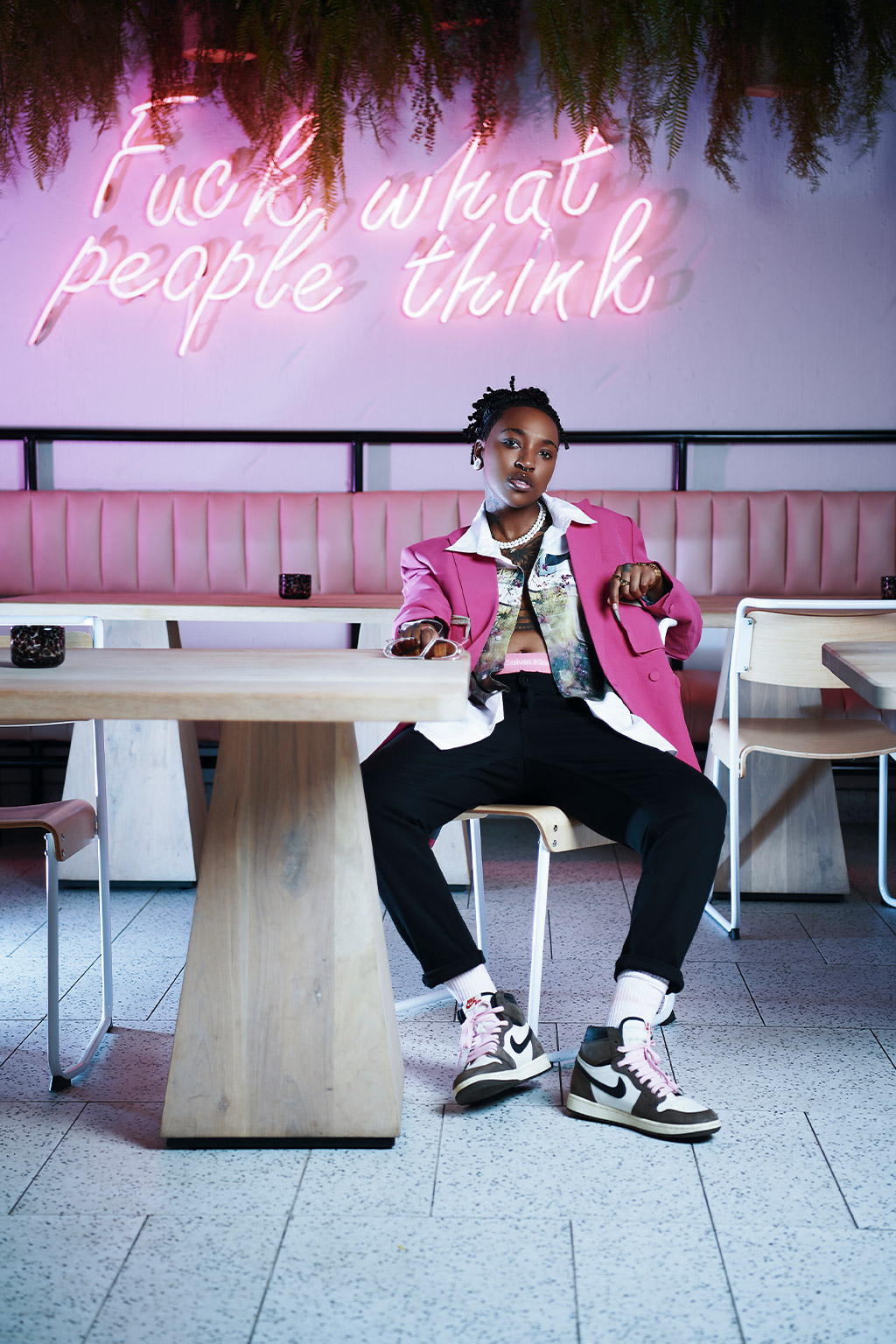
She’s grown into one of South Africa’s most successful digital artists, with work commissioned the world over. Asked if she feels a kind of validation in her choice to pursue art, she says, “I didn’t think that it would be where it is now. But I definitely think seeing continued work and seeing how I’ve grown from being trusted with small projects, to being trusted with larger projects, from getting very specific briefs, to getting completely open briefs. I’ve seen how I’ve been trusted, and that kind of trust from brands that seldom give that kind of trust, especially when money’s involved, feels like validation because of the amount of experience and work that I’ve put in. And I think gaining people’s trust when it comes with something that they built long before you, and they’re trusting you with the present situation, as well as their potential in the future, I think is really great validation.”
“But the biggest validation for me is changing my parents’ perspective. How they see art and a creative career has been a complete 180. They’re the ones that are talking to their friends that are also parents that have creative kids. They’re the ones that are the biggest advocates for pushing/having your kids consider a creative career. Seeing my parents actually become advocates for artists, that has actually been the biggest validation from me. So it is cool working with brands and everything, but to be able to change a mindset, I think is greater validation for me.”
One of the challenges of her career has been the shift from digital art to street art. Asking about that transition, she says, “Personally, as an artist, I had wanted to make my art as accessible as possible.” Feedback from brand partners let her know just how low internet access throughout Africa. “So how do I make the message that I want to go out there as effective as possible If I’m only creating it for people that need to get into internet access to experience it. So if I’m creating like large format kind of work, people throughout Africa aren’t going to have the opportunity to access it, because it’s an extremely large file, data’s an issue, too many obstacles that come around it.”
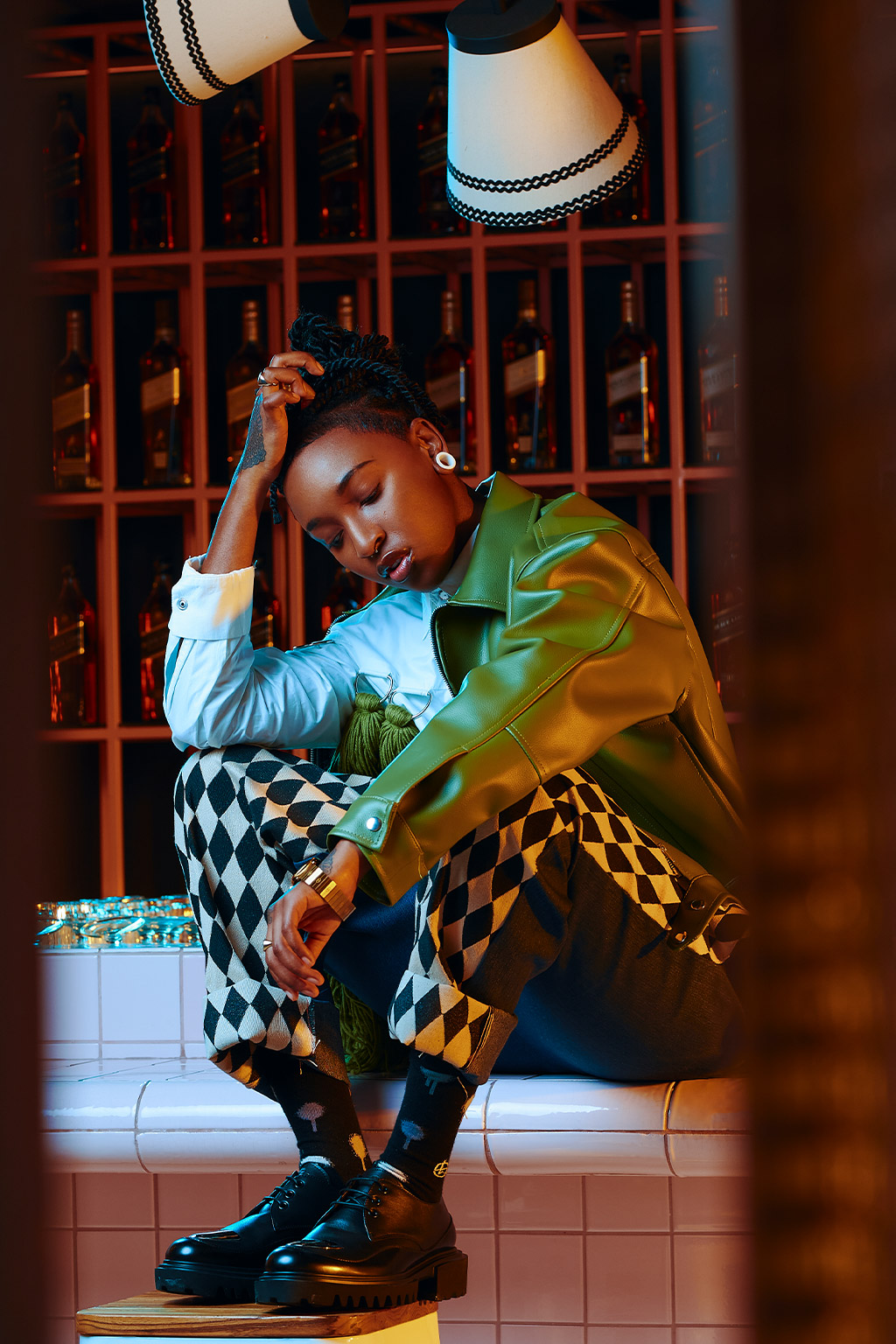
While thinking of the impact of scale – even on print medium – and the barriers to access, she decided to go back to the old school ways of creating art. “We have one of the first rock paintings ever recorded is within our country. So why don’t we bring back those old ways of doing things? I think it has a lot of longevity, impact, and it’s very difficult to ignore. Whenever people see street art, it’s very difficult to ignore. Whether it’s graffiti or many of the other streams that street art can exist in.”
She thought her biggest challenge would come from converting something created on a computer screen to a mural six stories high, but it came from the community of graffiti artists.
“Graffiti has got very strict rules of like, who can tag, how to tag, how do you come up, paying your dues to certain artists. Learning how to tag is usually something that’s passed on from another graffiti artist. So all the graffiti artists that’ve been a part of the scene for long enough passes that knowledge on to someone else.”
Her way of doing things was rejected by the graffiti community, who favour anonymity, hierarchy, and particular art styles over anything else. “That was the antithesis to everything that I did. I wanted to do everything different, break boundaries, open up the industry for anyone to be able to come in. I didn’t want someone else thinking that, ‘oh, I’m a black woman from a small town. I wouldn’t be able to do this.’ Everyone to think that they’re capable of doing anything. And this industry actually, wasn’t something that was conducive to that. It’s super male dominated as well. And finding that kind of safety and place became a very difficult obstacle to overcome.”
“So trying to ignore the backlash, ignore the trolls on Instagram, and rather focus on what I wanted to achieve was the most difficult part, because it felt like I was doing it alone. At the time when I was looking for other black female street artists, it was really difficult to find people that weren’t within a graffiti sphere but actually wanted to change that. And almost intentionally ruffling feathers so that we can bring in change when it comes to creating street art. So that became a difficult time because I felt very alone in that, needing to teach myself how this works, needing to ensure safety, and also needing to ensure that my work doesn’t get tagged over.”
“One of the ways that I started thinking of trying to grow this and change how people are viewing this was trying to get my fellow illustrators also to look into street art. So that was when I spoke to Russell Abrahams to look into street art and he felt the same way wanting to change the perception, and also be the representation as well. I spoke to African Ginger about doing street art, translating his artworks that are find art pieces or digital pieces into large scale, and the benefits around that. So the three of us, we’re the ones helping each other when it came to that. And through the years we’ve been seeing like how that’s been changing. We have a lot more street artists coming up and really, really talented young kids feeling like they can do it and don’t have to go through gatekeepers to be able to put their artwork out there.”
Altar Bar in Greenside is the scene of our cover shoot. Surrounded by murals that are the work of both Russell and Seth, I ask her about the ways in which we share art publicly and the inspiration it brings to young artists. “It encourages, no matter what your style is. We deserve to see it, it deserves to be here, and you deserve to tell your story in your own unique way.”
Growing into the confident and assured artist she is now, she says she owes it all to consistency. “When it comes to my work or bettering myself as a person, if I keep doing the things that bring good change consistently then I’m finally getting to arrive to the place that I wanted to be in.”
As an artist that values consistency and creativity in everything she does, in reaching the heights she’s set for her career, the only thing left for Karabo Poppy to do is keep walking.
